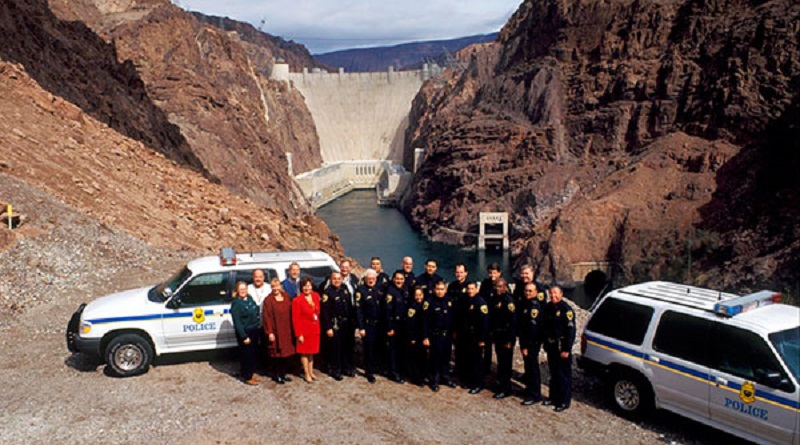
No doubt the Hoover Dam Police are tired of the old joke of the headline, but they exist and represent a critical function of law enforcement. Recent attacks on major power grids have resurrected concerns about protecting critical infrastructure that the 9/11 World Trade Center attacks highlighted over twenty years ago. Specialty police like the Hoover Dam cops and those protecting nuclear facilities are not available for the vast majority of properties at risk of attack.
On Christmas day, 2022, two men attacked four electrical substations in Washington State. As a result over 15,000 were without power and an estimated $3 million in damage was caused. Although the motive, according to one suspect, was to knock out alarm systems so that a business could be burglarized the specter of terrorism remains.
Other attacks include shootings at two electric substations in North Carolina in early December of last year and damage to two other substations in South Carolina. In addition to the Washington attacks, Oregon was also hit with attacks on power stations in October and November.
With more than 55,000 power substations across the nation, the relatively small number of firearms attacks on them may seem minor, but the sudden spate of damage to them is cause for concern. Without arrests, law enforcement has yet to determine if the incidents are connected to a terrorist motive, but experts are on heightened alert.
Having worked at one time for an agency located along the Mississippi river at the time of the World Trade Center attacks, the focus on terrorism added new concerns for patrol. The Mississippi is peppered with a system of locks and dams that assist in flood control vital for commercial river traffic essential for shipping agricultural and other products. Bridges along the way connect major east/west highway routes, not to mention the riverside industries sustained by America’s waterways.
Other potential targets for economic chaos that would bring an evil grin to terrorists include petroleum refineries, railroads, and pipelines. In 1982 over 250 refineries were operating in the U.S. Now there are about 130. Despite the move toward non-fossil fuels, the petroleum industry is vital to innumerable products used in our daily lives. A coordinated attack – whether by traditional means or cyber crime – risks crippling our national security. The expense and regulatory burden of building a new refinery mean that lost facilities are not likely to be replaced.
Local law enforcement is the key to protecting all these assets. The diminution of law enforcement strength not only affects the response to traditional crimes but weakens our national security in a very real way. Gathering collective intelligence to establish patterns is a challenge without a centralized database for reporting attacks on infrastructure.
In addition to targets that can cause widespread outages and expensive repairs, damage from irresponsible vandals using such facilities as random target practice is a concern that may not be reported as potential intentional acts designed to disrupt power sources. Like stop signs and street lights, publicly exposed utilities are tempting to that select brand of idiots driving around with rifles and shotguns itching to destroy something.
Vandalism or terroristic attacks are not the only reason for criminals to damage facilities. When scrap metal values are high the amount of copper in electrical equipment is a profitable harvest for thieves.
The U.S. Department of Homeland Security has issued a terrorism advisory bulletin which was distributed just before the attacks in the Carolinas. The threat, according to the briefing, comes from both potentially organized criminal cells and disgruntled “lone wolf” actors who may have a variety of grievances and motivations. Internet chatter indicates that there is recruitment for others to join the mayhem.
An expert in infrastructure security within Homeland Security’s Cybersecurity and Infrastructure Security Agency says it is known by intelligence agencies that bad actors are pre-positioning assets to conduct attacks when it might be useful to them in matters of geopolitical maneuvering. Russia’s use of attacks on Ukrainian infrastructure is an example and deserves a study of their methods and targets.
Threats of cyber attacks loom as well, but the physical security of the fragile web of power sources, bridges, roads, and dams around the country rests largely on the diligence of local law enforcement to discover, prevent, and prosecute offenders. Citizens don’t often think of local law enforcement as essential to national security, but the officer on patrol is a critical element in keeping us all safe from disaster.